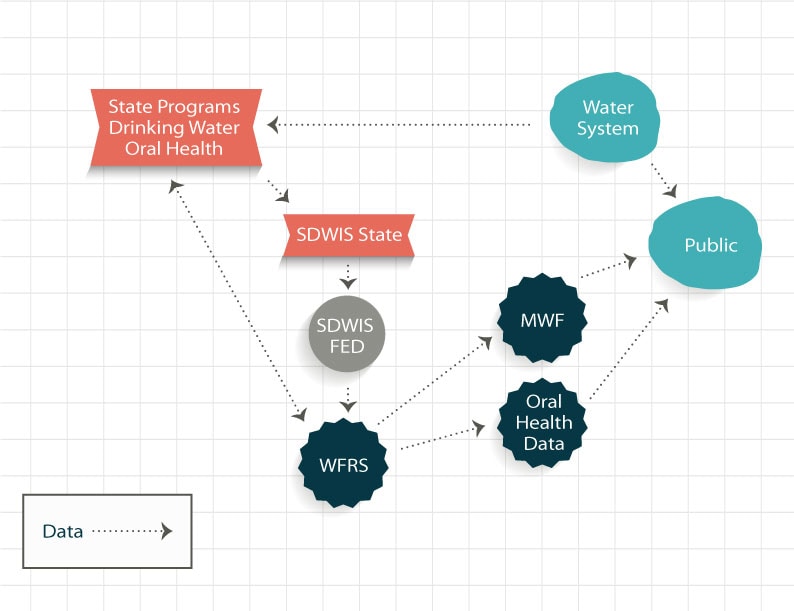State Programs
Water fluoridation programs in the United States are administered by a state agency or department. Data submitted by water utility services are managed by the state drinking water or state oral health agencies to verify correct operations and improve performance. The data in WFRS is entered and maintained by the individual state agencies.
SDWIS State
The Safe Drinking Water Information System (SDWIS) is part of the U.S. Environmental Protection Agency’s data management program. State drinking water programs enter and maintain information on water system configurations and relationships within SDWIS STATEexternal icon.
SDWIS Fed
The U.S. Environmental Protection Agency maintains a Safe Drinking Water Information System (SDWIS) databaseexternal icon on approximately 160,000 public water systems. The information in SDWIS FED is based on the data entered by state drinking water programs to SDWIS STATE.
WFRS
The CDC Water Fluoridation Reporting System is the principal tool for participating state programs to manage water fluoridation data within their state. Data is entered and maintained by participating states. Data can be updated at any time during a year, and does not follow a set schedule.
MWF
The CDC My Water’s Fluoride provides public access to water fluoridation status for water systems in participating states. Data comes from WFRS and is updated from WFRS to MWF on a daily basis and is as accurate as the most recent data entered by state programs.
Oral Health Data
The CDC Oral Health Data site provides public access to water fluoridation status using a GIS analysis on the state levels. Oral Health Data presents the water fluoridation status based on WFRS for states that participate in the CDC data management program and is updated from WFRS to Oral Health Maps on a daily basis.
Water System
Water utility services monitor operations and report facility operational results, dosages of additives, and split samples for laboratory confirmation. Water utility systems also mail a Consumer Confidence Report (CCR) annually to customers. Utility customers can contact their water supplier for more information about the local water system. The water utility systems is the best source of current information about their water quality, but state programs verify correct operations and can provide another convenient resource to consumers about their water quality.
Public
In 2008, approximately 73 percent of the U.S. population on public water systems had access to community water fluoridation, which is a safe, healthy, and effective means of reducing tooth decay.
